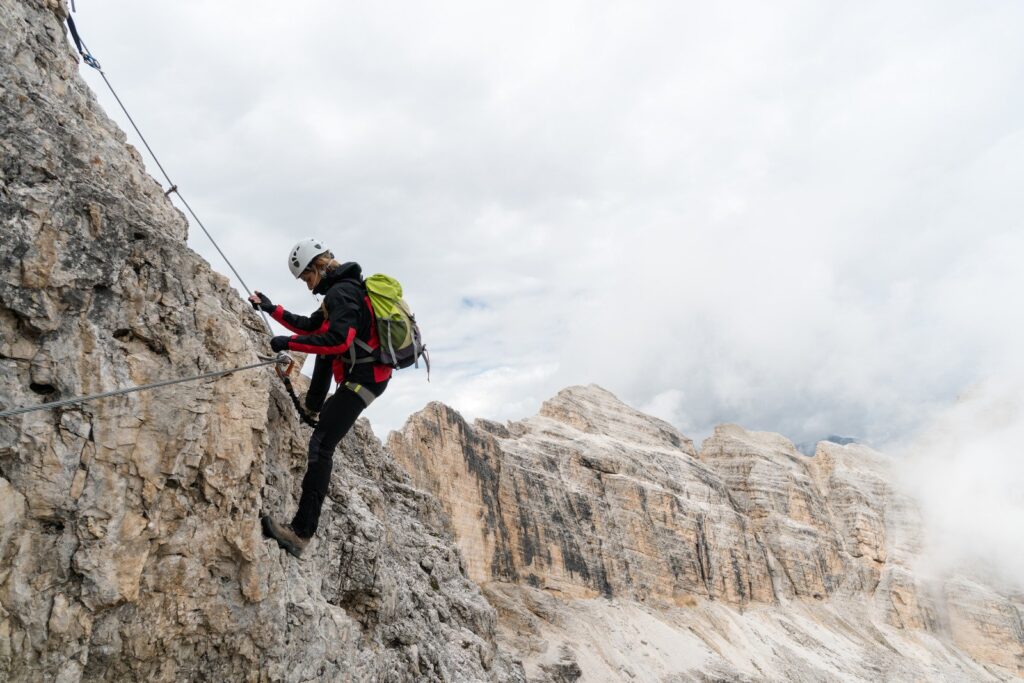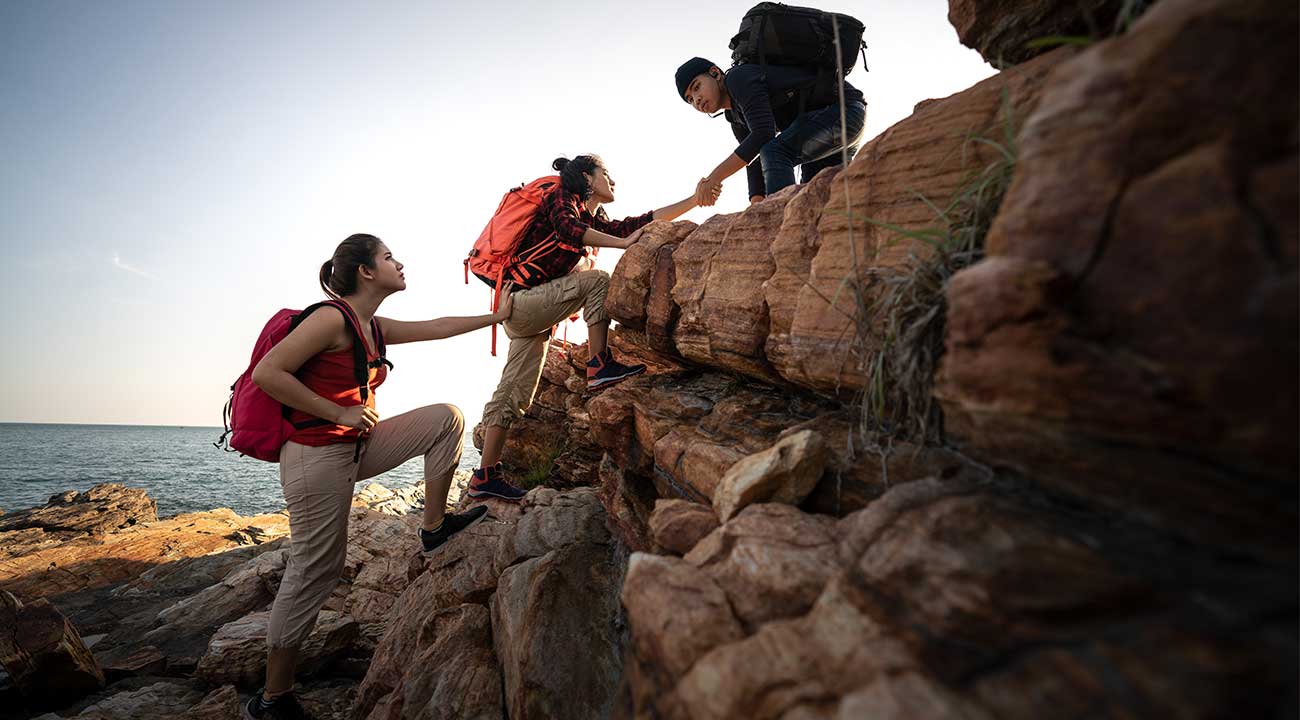In the world of outdoor adventures, climbing is the sport of ascending steep mountains, cliffsides, etc. Participants climb across various rock formations in order to test their strength, dexterity, and stamina. But it is not only about being competitive as climbing is one of the most adventurous outdoor activities. Generally, the goal is to reach the peak within a certain time.
However, depending on the type of climbing you do, the rules will change accordingly. So, if you are new to climbing or you’re very interested to know about the different types of climbing, then you have come to the right place. We will be discussing all the popular forms of climbing in this article so that you have a good idea of what climbing is and which one you should try.
Alex Honnold, the world’s best free climber, once said that the confidence needed for free climbing can either come from being physically fit or from preparation and rehearsal. This is very true as you need to have both in order to excel as a climber. Simply being physically strong won’t be enough for you to be an exceptional climber. You need to have the technical knowledge for it as well. And the first step to gaining that knowledge is to know the different kinds of climbing.
Most Common Types Of Climbing
Traditional Climbing
Traditional climbing is a form of climbing where the participant ascends a mountain or hillside using their own mountaineering gear. As they climb up, they place pitons or cams into the cracks of the steep surface to secure themselves from falling. They do this by attaching a climbing rope to the pitons. So, in the event that they lose their grip, the piton and rope can catch them.
The goal of traditional climbing is to reach the top. However, it is not timed so you can go at your own pace. One important thing to mention is, as part of “clean climbing” ethics, you should not leave any climbing gear wedged into the surface of the cliff. Always remove your anchor and gear when you are done.
Sport Climbing (Lead Climbing)
Unlike traditional climbing where you have to use your own gear to scale up a cliffside, sport climbing takes place on pre-bolted rock faces. Meaning you have to rely more on your athletic skills rather than your mountain-scaling knowledge. Sport climbing is a test of your strength, stamina, and endurance as climbers solely depend on their hands, legs, and fingers to get to the top. But that doesn’t mean that you don’t have to use any gear at all.
Since the surface is already pre-bolted, the climber needs to only equip themselves with a climbing rope and a harness. So that as they move up the wall, they can clip themselves into the anchor points to keep themselves safe and secure. The other end of the rope is managed by a belayer who decides how much rope the climber can use.
This is crucial for the success of the climber as too little rope can restrict their movements, while too much can be a recipe for disaster in the case of a fall. This form of climbing is very competitive and popular among veteran climbers as it is a great demonstration of their physical and mental prowess.
Bouldering
Bouldering has been gaining a lot of popularity amongst both new and old climbers. It is a form of rock climbing that is done without a rope. For safety, a crash pad is placed underneath the participants in case of a fall. This is primarily done in a controlled environment. It can be done indoors such as inside a gym. Or outdoors on natural rock formations.
These are relatively short climbs compared to traditional or sport climbing. Climbers are usually required to scale up a rock face of about 4 to 5 meters high on average. But, as the climbers don’t have any rope attached to them, they have to rely on proper falling techniques in order to avoid getting hurt, making it not ideal for newbies.
The climbers depend on soft mattress-like cushions to break their fall which is known as crash pads. Overall, bouldering is very easy to get into as it requires no gear and very little expertise. But if you don’t do proper research and prepare yourself before attempting it, then you could potentially hurt yourself.
Free Soloing
Free soloing is one of the most dangerous forms of climbing in the world. It is done without having any protective gear. That means no ropes, harnesses, anchors, pitons, or anything. Only pure skill, climbing aptitude, and unwavering courage are required to do this. So, unless you are a mountaineering expert who has the skills and mental fortitude for this, then you should not even dream of attempting free solo climbing.
As we have mentioned before, Alex Hannold is the world’s best free soloist. He made a movie called “Free Solo” that shares all of his experiences as a climber. In the movie, he states that you should only push yourself as far as you can handle as too much can be fatal. These words are true regardless of whether you are a beginner or a veteran climber.
If you do have extensive knowledge and skill in climbing, you can attempt free soloing. But do keep in mind the risks involved with it as a single mistake can be life-threatening. As for newcomers to climbing, you should avoid free soloing if you don’t want to end up at the hospital or worse.
Top Rope Climbing
Top rope climbing is usually used to introduce newcomers to the world of climbing. It is fairly simple and beginner-friendly. A vertical rope is attached to the top of a climbing wall which is then used by climbers to ascend. The rope is run through an anchor at the top and fastened to the participant. A belayer is stationed at the bottom of the wall and is in charge of holding the other end of the rope. That way if the climber falls, the belayer can catch them so that they don’t injure themselves.
The only gear required for this activity is a harness so that you can tie the rope around you. Most gyms usually have top rope climbing facilities available to teach people the basics of climbing. However, if you want a challenge then there are many outdoor top rope climbing competitions that test your climbing skills.

Speed Climbing
Competitive climbing has three major disciplines: Sport Climbing, Bouldering, and Speed Climbing. We have already discussed sport climbing and bouldering. As for speed climbing, a specific route is set and climbers are timed on how fast they can climb up the route. Speed climbing is very similar to sport climbing. The climber follows a series of holds and ridges to get to the top while competing with others. It can somewhat be considered a team sport as the success of the climber depends on themselves and the belayer.
These competitions are usually held indoors and are regulated by the International Federation of Sport Climbing. However, it is the most niche form of climbing in this list as it is not too popular or widely practiced. It did get some recognition in the 2020 Tokyo Olympics as it was approved to be one of the events for rock climbing.
Ice Climbing
And last but not the least, we have ice climbing. This form of climbing has been heavily popularized by movies and the media. It is done on snowy mountains using specialized climbing gear like ice picks and ice climbing boots.
Although there isn’t much of a difference between the mechanics of climbing rocky and frozen terrains, ice climbing can put a lot more stress on your body. That is because not only are you fighting against gravity as you climb higher, but you have to also deal with the freezing temperature.
The only downside of ice climbing is that you can only do it in the winter. But there are many prime locations for ice climbing enthusiasts to take on the frozen landscape all year round.
Final Thoughts
There are many other variations of climbing that are not possible to cover in a single article. If you want to learn more or have a specific type of climbing in mind, then you can do some research online.
But that covers most of the basic types of climbing that you will need to know about before taking your first step into the world of outdoor sports. With this knowledge, you now have a good understanding of what being a climber requires.
If you want to take climbing seriously, then the two most important things you should always remember are that there is no such thing as being over-prepared and that physical fitness is crucial if you want to be a successful climber.

Robert Coleman, in one word is a multitasker. He enthusiastically works as an outdoor guide. He also has led large groups for backpacking at Bogota in Columbia. Hours of research and field experiences have helped him to stand as one of the best professional reviewers for anything related to outdoors. He improvises in using the right tool rather than packing tons of unnecessary things while outdoors.









Leave a Comment